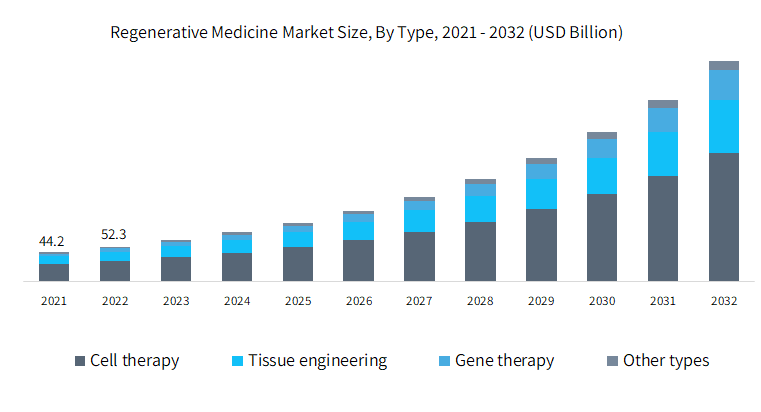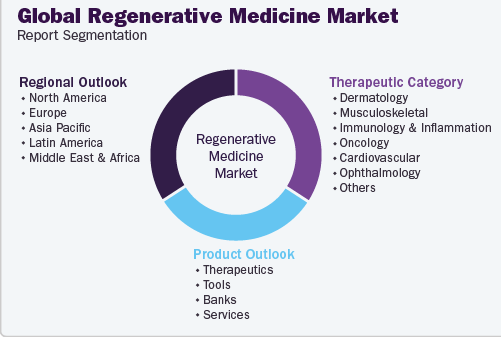Conference series cordially invites all presenters and attendees to the "18th International Conference on Regenerative Repair and Medicine" set to take place in London, UK on June 27-28, 2024 with the theme of New Advancements in Stem Cell and Regenerative Medicine. The Regenerative Med Meet 2024 Conference offers forums for discussion of recent and current developments in Regenerative Repair Medicine on a global scale. We kindly invite everyone from around the world to attend this international scientific conference.
The goal of REGENERATIVE MED MEET 2024 is to bring together top researchers, scientists, and research students from around the world to exchange and share research findings and experiences related to all facets of regenerative medicine and repair. This conference offers a forum for the best conversations and networking opportunities, as well as an opportunity to take advantage of the latest developments in the application of cell therapy and regenerative medicine in various research and healthcare fields. It includes timely keynote presentations, oral talks, poster presentations, and exhibitions.
Why to Attend?
Top Academic professionals, scientists and research scholars will convene at REGENERATIVE MED MEET 2024 to interact and share their practices and research discoveries on all aspects of gynaecology and obstetrics. It also provides scientists practitioners and professors with the best interdisciplinary forum for presenting and discussing the most recent novelties trends and concerns as well as the practical difficulties they have encountered and the solutions they have chosen in the field of Research Professors in the field of cell therapy and regenerative medicine. The primary purpose of the conference is to educate medical experts in the field of regenerative medicine as well as the general public about healthy living throughout the world and to motivate them to act fast to promote it.
Target Audience:
-
Eminent Scientists/Research Professors in the field of cell therapy and regenerative medicine
-
Clinicians
-
Junior/Senior research fellows
-
Directors of Biopharma companies
-
Members of different research associations
-
Manufacturing medical devices companies
-
Business entrepreneurs
-
Medical colleges
-
Industry professionals
-
Diagnostic laboratory professionals
Regenerative medicine is the term for a collection of biological research and clinical treatments that try to replace or "regenerate" human cells, tissues, or organs in order to restore or establish normal functions that have been compromised by certain disorders. Because it offers the possibility of either replacing damaged tissue or encouraging the body's natural healing processes to mend the damaged tissues or organs, the topic of regenerative medicine has garnered a lot of attention. Additionally, it might make it possible for researchers to cultivate organs and tissues in the lab and safely implant them into human bodies.
In the biomedical field, tissue engineering is frequently utilised to regenerate and repair damaged or diseased tissues. By implanting natural, synthetic, or semisynthetic tissue and organ mimics that are either completely functional right away or develop into the necessary functionality tissue engineering treats tissue and organ failure. Although the field's initial focus was on skin equivalents for treating burns more and more tissue types are currently being produced and scaffolds and biomaterials are being successfully used as delivery vehicles. Differentiated or undifferentiated cells like stem cells, can be persuaded to become the target cell type via a number of strategies.
Nanotechnology has replaced intriguing fields in cell therapy and regenerative medicine in recent years. Studies on the interactions between nanomaterials or nanostructures and stem cells, both theoretical and experimental, have produced some interesting developments. It is well known that nanotechnology nanostructures and nanomaterials play a crucial role in the fundamental advancements of stem cell-based therapies for injuries and certain degenerative diseases.
-
Nanotechnology In The Regeneration of Complex Tissues
-
Regenerative Approaches With Nanoparticles
Gene therapy employs genetics to prevent or treat any illness. In the future this method might enable medical professionals to treat a condition without the need for medication or surgery by introducing a gene into the patient's cells. The researchers are now testing a number of gene therapy strategies, such as inactivating a mutant gene that isn't working correctly substituting a healthy copy of the gene for the faulty gene that causes the disease putting a new gene into the body to aid in the treatment of a sickness.
Sports-related injuries to any or all of the musculoskeletal system's structures can be investigated prevented and restored by medicinal surgical and rehabilitative methods in orthopaedic sports medicine. In regenerative medicine injured tissue such as muscles, tendons, ligaments, or cartilage is encouraged to mend or even "grow back" by natural means. Procedures both surgical and non-surgical are carried out with the express purpose of healing and "regenerating" the injured tissues.
Clinical trials are investigations conducted on human participants in order to assess how health-related interventions affect biological or behavioural outcomes relevant to health. A large portion of the first research in stem cell therapy and cell therapy clinical trials was concerned with the general efficacy and safety of the procedures. Any new treatment's main concerns should be its long-term safety and consistency of outcomes.
-
Types of Gene Therapy
-
Gene Therapy Techniques
-
Gene Therapy Challenges
Tissue engineering has numerous uses although it is mostly applied in organ transplantation and therapeutic cloning. Examples of these applications are bio-artificial liver devices artificial pancreas, artificial bladders, and cartilage. Tissue engineering is a technique used to replace damaged cells in our body when there is damage to organs or bodily cells. A vast array of materials and products designed with tissue engineering are utilised to treat and even prevent human ailments.
In order to investigate the numerous facets of regenerative medicine, including stem cell repopulation, recellularization, the cellular mechanisms behind limb and spinal cord regeneration and many others researchers are using animal models.
Global public healthcare payers are exerting significant pricing pressure as governments work to close budget shortfalls. By decreasing the need for long-term care and the related problems, regenerative medicine may be able to save public health organisations money. This could have positive effects on the global economy as well. The tissue engineering and regeneration products market reached over $55.9 billion globally in 2010 and it is projected to grow to $135 billion by 2024.
Applications for social insurance from previous situations are using biomaterials. Regardless, their usefulness has increased and their flexibility has been enhanced by subsequent improvement. Biomaterials have revolutionised fields such as bioengineering and tissue engineering to enable the development of new approaches to combat dangerous illnesses. In addition to biomaterials, the innovation of immature microorganisms is also being used to improve the current human services offices.
Very few effective treatment options are available to people who require reconstructive surgery because of age, burn injuries, cancer, complicated wounds, birth defects or other trauma. The aim of regenerative medicine therapies being developed by researchers and plastic surgeons is to repair damaged tissue while also producing new tissue.
The last few years have seen a remarkable advancement in the science of cancer immunology, leading to the development of numerous novel cancer treatment techniques known as immunotherapies. Immunotherapy is a form of treatment that strengthens the immune response against tumours by either boosting the activity of particular immune system components or by blocking certain signals that cancer cells produce to inhibit immune responses. Certain forms of immunotherapy are often referred to as biologic or biotherapies.
GTRs are dental surgical technique that use barrier membranes to guide the formation of new gingival tissue and bone at locations where there is not enough gingiva or bone in suitable quantities or sizes for optimal function, aesthetics, or prosthetic restoration.
Although stem cell research has been productive from its inception more recent developments in the field have mostly concentrated on converting scientific discoveries into novel treatments. It is a novel approach to tissue and organ restoration in a number of diseases. There is an acute need for new therapeutic approaches because of the annual loss of many lives from the lack of donor organs which leads to permanent immunosuppression. The capacity to self-renew and differentiate into a wide variety of specialised cell types are two traits that define stem cells.
One of the most crucial components that make up the fundamental idea of regenerative medicine is scaffolds, which are a part of the field's core technologies. Thousands of surgical operations and treatments are carried out daily to replace or treat tissue that has been harmed by an illness or accident. Tissue engineering (TE) is a rapidly evolving science that primarily aims to repair damaged tissues by fusing human cells with highly porous scaffold biomaterials that serve as templates for tissue regeneration and direct the formation of new tissue.
Regenerative Medicine Market Size & Trends
The size of the global market for regenerative medicine was estimated at USD 30.43 billion in 2023, and between 2024 and 2030, it is projected to expand at a compound annual growth rate (CAGR) of 16.79%. Personalised medicine is gradually becoming more popular than traditional treatment methods, thanks to recent developments in biological medicines. Firms engaged in the creation of biological therapies now have prospects as a result. In addition, there is now increased emphasis on research to find innovative regenerative medicines as the prevalence of degenerative conditions rises.

Global Regenerative Medicine Market Report Segmentation:
This study examines the most recent developments in the industry in each of the sub-segments and projects revenue growth at the national, regional, and worldwide levels between 2018 and 2030. Grand View Research has divided the worldwide regenerative medicine market report into segments according to product, therapeutic category, and geographic area for this analysis. In terms of market share, North America dominated the global market in 2023. The fast rate of growth is ascribed to the region's high healthcare spending, the availability of both public and private funding for growth and development, and the existence of cutting-edge technological frameworks that facilitate the early identification of chronic illnesses.

REGENERATIVE MED MEET 2023 was a big success because of all of our incredible keynote speakers, presenters, conference participants, students, associations, media partners, and guests. Conference Series played a major role in the success of the "17th International Conference on Regenerative Repair and Medicine," which took place in Frankfurt, Germany on August 21–22, 2023. Renowned keynote speakers representing numerous elite organisations and groups addressed the audience. The event was made possible by the generous and active participation of renowned experts, members of the Editorial Board of journals in the Conference series, students, research scholars, scientists, young researchers, industrialists, doctors, Clinicians, and student researchers. The conference started with a ceremony and speeches by the keynote forum speakers. The experts who spread the message with their beautiful talk were. Let's reconnect @ REGENERATIVE MED MEET 2024





